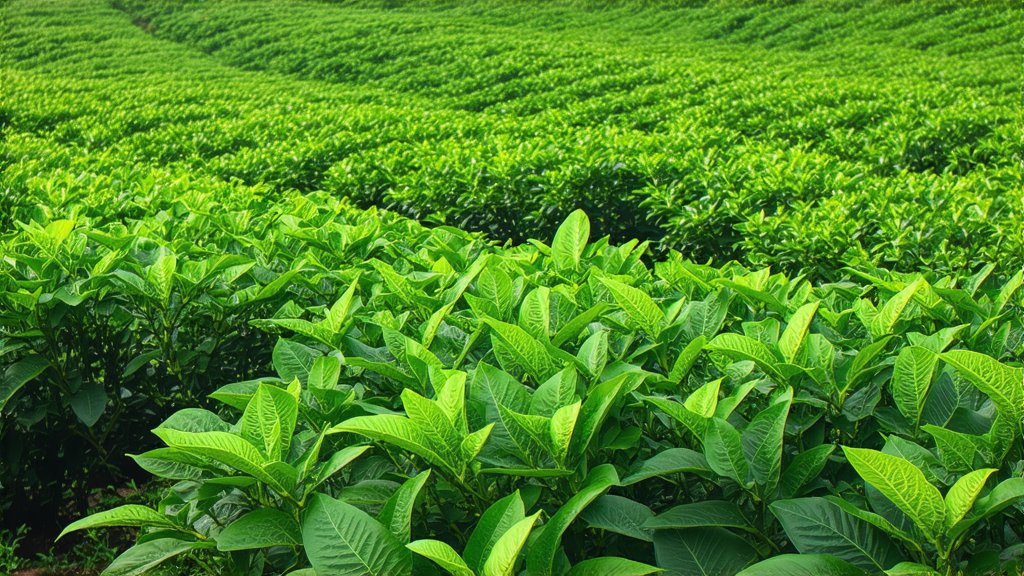
In the vast and diverse landscape of Chinese tea culture, few varieties hold as much mystique and admiration as Tieguanyin, a premium Oolong tea originating from the picturesque mountains of Anxi County in Fujian Province. This article embarks on an immersive journey through the history, varieties, meticulous craftsmanship involved in its production, and the artful rituals associated with its appreciation, all aimed at introducing this exquisite tea to an international audience.
A Brief History of Tieguanyin
Tieguanyin, often referred to as the "Iron Goddess of Mercy," has a storied past dating back over 300 years. Its name is derived from a legend involving a poor scholar who was saved by a wealthy lady, later revealed to be the goddess Guanyin, disguised as a mortal. The scholar vowed to repay her kindness by dedicating his life to helping others, and upon becoming a successful tea merchant, he named his finest tea after her. This tale, while more myth than history, encapsulates the essence of compassion and quality that defines Tieguanyin.
Varieties and Classification
Tieguanyin falls under the broader category of Oolong teas, which are semi-oxidized and occupy a unique middle ground between green and black teas. Unlike other Oolongs, Tieguanyin undergoes a specific process that imparts its distinctive flavor profile. There are primarily two types recognized: traditional and aromatic. Traditional Tieguanyin emphasizes a richer, more complex taste with hints of orchid and fruitiness, whereas the aromatic version focuses on floral notes, particularly those reminiscent of osmanthus blossoms.
The Art of Crafting Tieguanyin
The creation of Tieguanyin is a testament to the skill and dedication of master tea artisans. The process begins with careful handpicking of only the youngest leaves and buds during springtime, when they are most tender and rich in nutrients. These leaves then undergo a series of meticulous steps:
- Withering: Freshly picked leaves are spread out to wilt under the sun or in shade, reducing moisture content and softening the leaves for rolling.
- Bruising: Leaves are gently shaken or tossed in bamboo baskets to further bruise them, facilitating enzymatic reactions that initiate oxidation.
- Fixation: To halt oxidation, the leaves are quickly pan-fired at high temperatures, preserving their vibrant green color and locking in flavors.
- Rolling: The leaves are rolled into tight balls or strips, enhancing the extraction of flavors during brewing.
- Oxidation: Controlled exposure to air allows for partial oxidation, crucial for developing Tieguanyin's unique character.
- Roasting: Finally, the leaves are roasted to remove any remaining moisture and refine their taste, resulting in a smooth, aromatic finish.
The Gongfu Tea Ceremony: Savoring Tieguanyin
To truly appreciate Tieguanyin, one must engage in the Gongfu tea ceremony, a practice deeply rooted in Chinese tea culture. This ritualistic preparation involves several steps designed to maximize the tea's potential:
- Warming the Teaware: Boiling water is used to cleanse and warm the teapot and cups, ensuring optimal brewing conditions.
- Rinsing the Leaves: A quick rinse of the tea leaves helps awaken their flavors and removes any impurities.
- Steeping: High-quality Tieguanyin requires shorter steeping times, typically around 15-30 seconds per infusion, using near-boiling water (around 95°C).
- Multiple Infusions: Tieguanyin can be steeped multiple times, each infusion revealing different layers of complexity and aroma.
- Appreciation: Observing the tea's color, aroma, taste, and even the shape of the unfurled leaves provides a holistic sensory experience.
Conclusion
Tieguanyin stands as a shining example of China's rich tea heritage, embodying centuries of tradition, artistry, and cultural significance. From its mythical origins to its intricate production process and the meditative practice of the Gongfu tea ceremony, every aspect of Tieguanyin invites exploration and appreciation. As we continue to share this remarkable tea with the world, it serves not just as a beverage but as a bridge connecting cultures and fostering a deeper understanding of the profound wisdom embedded within Chinese tea culture.